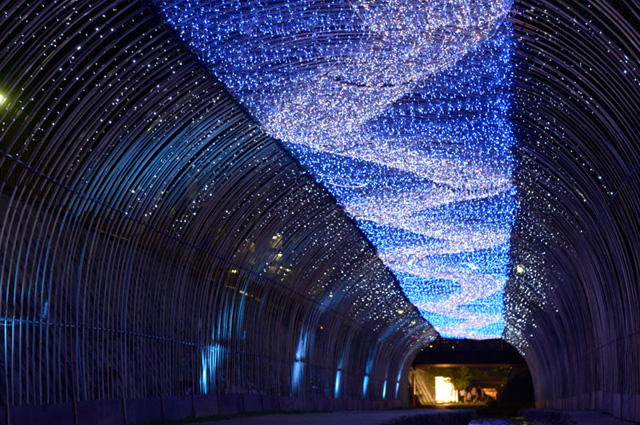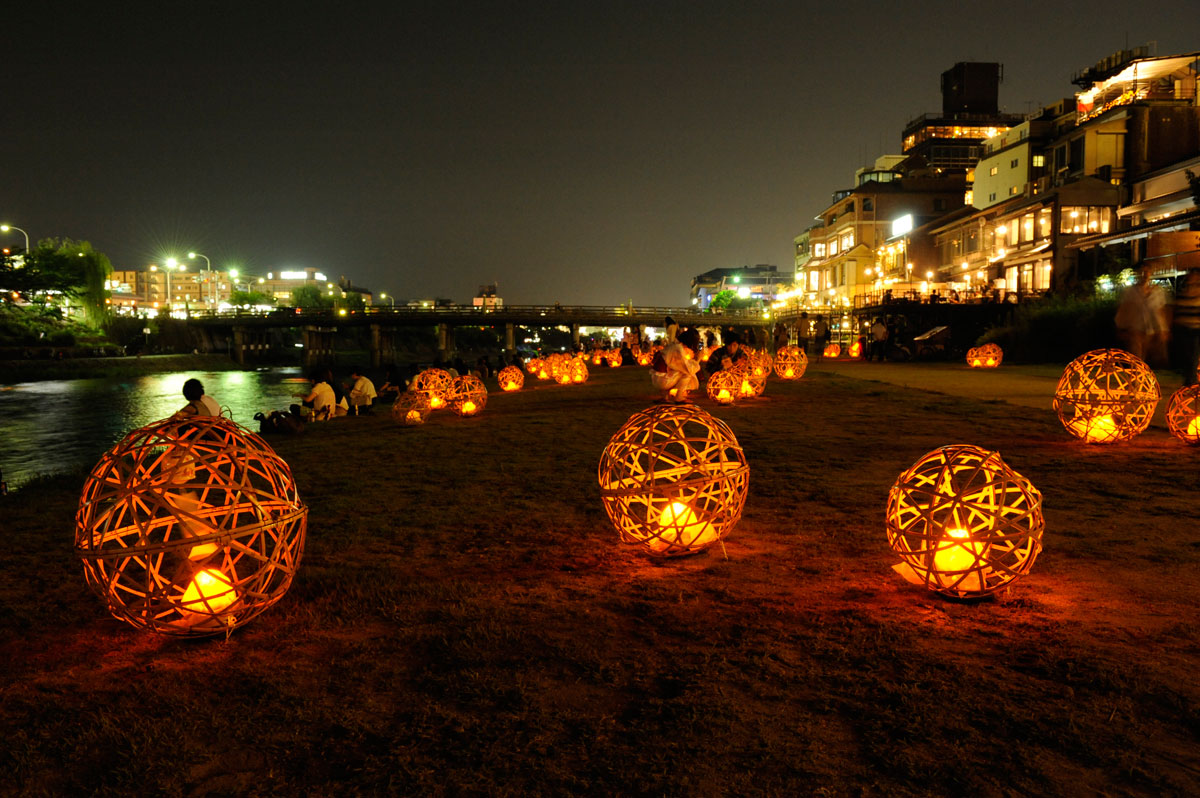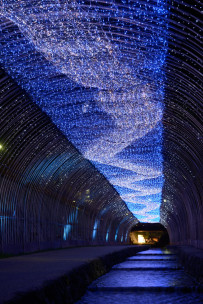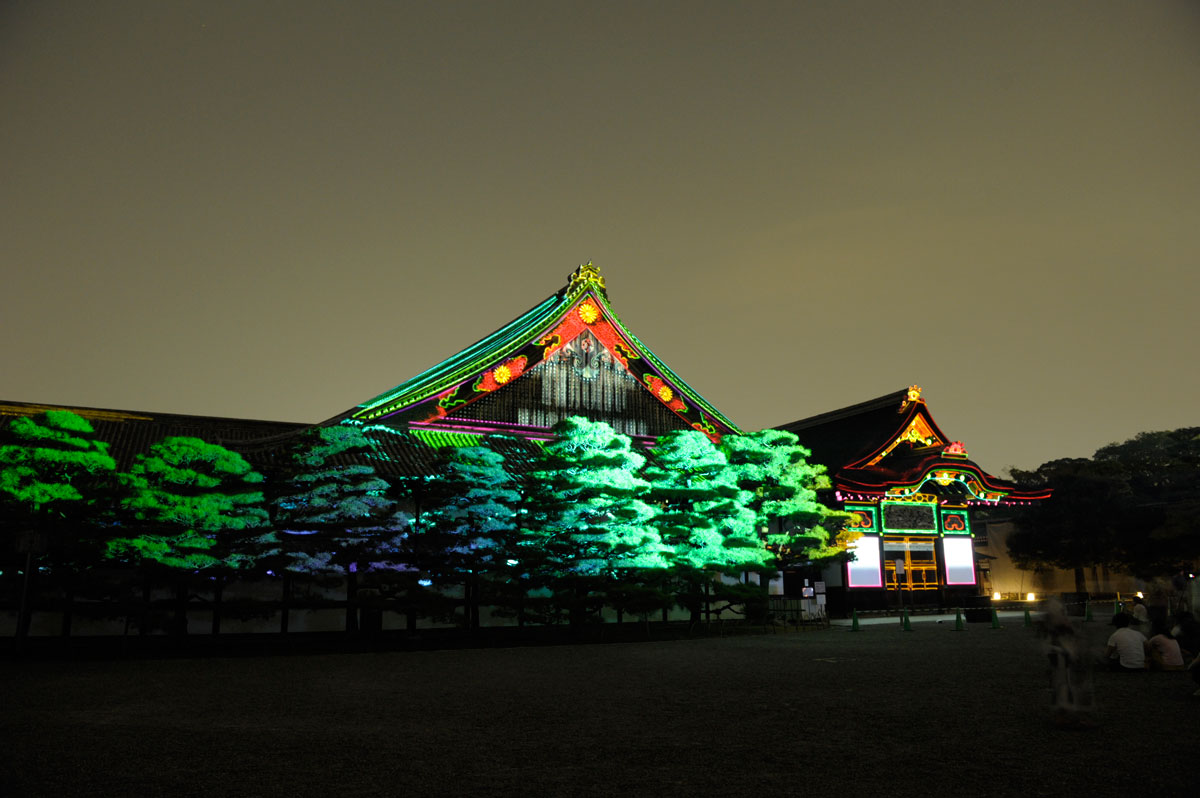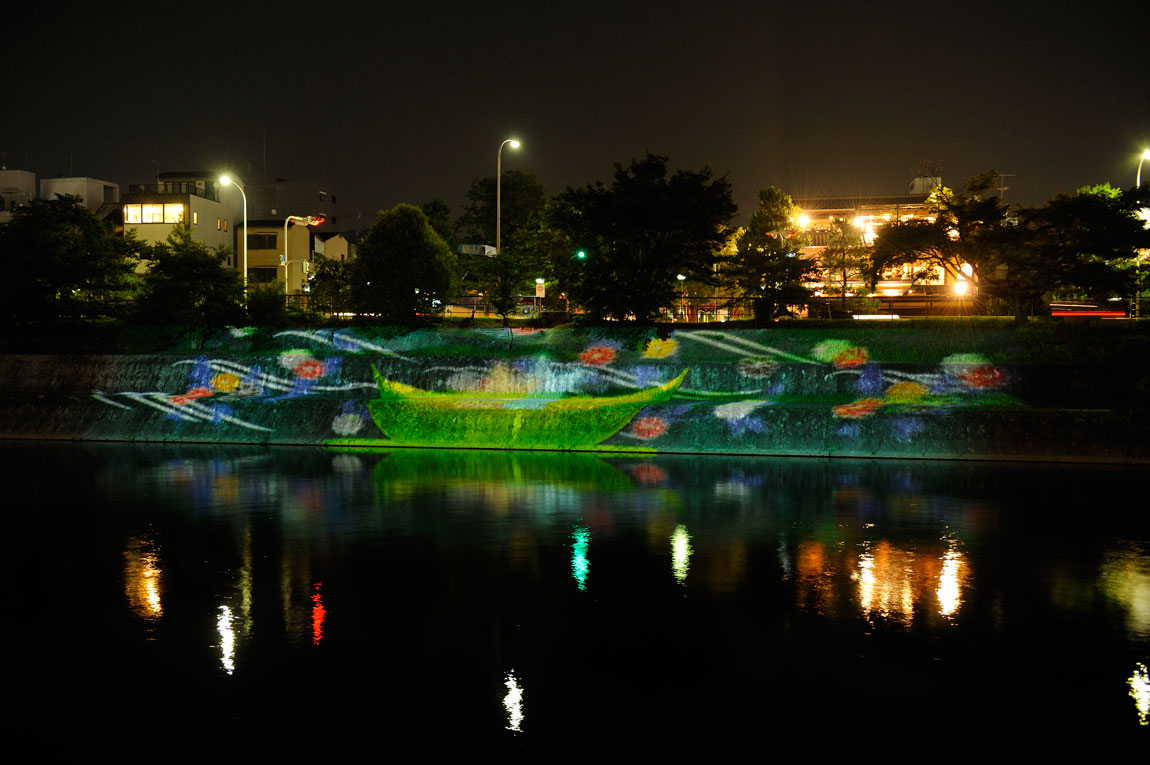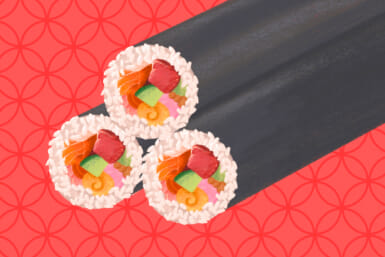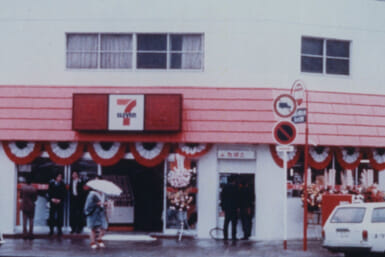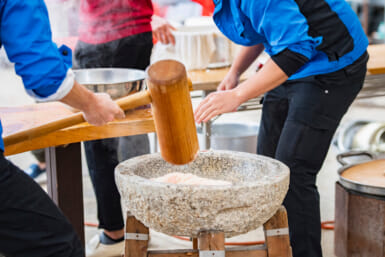Japan’s former capital puts its own luminous touch on the holiday that celebrates the story of celestial lovers.
By Alec Jordan
Tanabata is one of Japan’s most colorful traditions, and Kyoto was the place where, in the 8th century, the Chinese festival known as Qixi merged with traditional Japanese beliefs, and became the festival of Orihime and Hikoboshi.
Most children learn the story behind their heavenly romance in primary school: Orihime was the daughter of Tentei, King of the Heavens. Diligent young woman that she was, Orihime would sit by the side of the River of Heaven every day, weaving clothes for her family. But as time passed, Orihime found that she was lonely: working every day meant that she had no time to meet a suitable boy, and she began to despair that she would never be able to marry or have children.
Tentei, who could not bear to see his daughter unhappy, found her a good match in Hikoboshi, a young cowherd who tended to his cattle on the other side of the river. The two fell deeply in love—so deeply, in fact, that they began to neglect their duties. Hikoboshi’s cows roamed all over the fields of heaven, trampling the grass and flowers of the people who lived nearby, and Orihime neglected her weaving.
Infuriated by the couple’s dereliction of duties, Tentei separated the two to either side of the River of Heaven. The young princess was despondent at the thought of not being able to live without Hikoboshi. She implored her father to let them be reunited. Tentei was moved by his daughter’s emotion, and agreed that the two could meet again, but only if Orihime was diligent in her work and made certain that she did all the weaving she was supposed to do, and then only for one day: the seventh day of the seventh lunar month.
Traditionally, Tanabata is celebrated with a variety of decorations: streamers in bright hues, prayers written on colored pieces of paper and tied to bamboo leaves, and women wearing yukata of all shades. But the former capital has always been one to do things its own way, and the city’s unique approach to Tanabata, which it celebrated in the beginning of August in Kyoto, recalls the heavenly origins of the festival, and brings a little of the River of Heaven (or as we like to call it in English, the Milky Way) down to earth. Over the span of ten days, the areas by the Kamo and Hori Rivers come to life during the night.
At the Horikawa (Hori River) site, you can walk under a depiction of the Milky Way, made from LED lights that are attached to an arch of bamboo. As this part of Kyoto has long been a center of Yuzen silk manufacturing, you can also find long streams of embroidered silk floating on the surface of the Horikawa, depicting constellations and other scenes that represent the night skies above.
Tanabata has its early origins in a holiday when people would ask the gods for skills in handiwork, so it seems fitting that the holiday is also an opportunity to recognize the skill of students who have created a variety of works made with light and bamboo, which can be found throughout the Horikawa site.
Entrance to Kyoto’s famed Nijo Castle will be free during the Tanabata festival, and you can enter the grounds to hear musical performances, buy specialty products from Kyoto, and see the bewitching projection mapping that transforms the surface of Ninomaru Palace.
The Kamo River site—a broad river walk area that is popular throughout the year—becomes a celebration of light, sound, and even scent, as incense is placed at different locations along the river, and projection mapping turns the wall opposite the river walk into a screen that is visible while you walk or from the many restaurant terraces that look over the river.
August is usually one of the hottest months of the year, but the atmosphere of Kyoto’s Tanabata seems to fill the evenings with a refreshing feeling of coolness.

